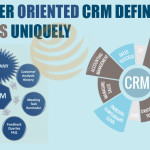CRM deployments are crucial in the present day and age and they tend to be helpful for the companies in a number of ways. Here we present to you the steps that you must execute during the CRM deployment.
As it comes to Customer Relationship Management (CRM) deployments, it’s certainly not easy as in most cases large companies can afford to make huge investments in strategic analysis, customization and training, whereas smaller companies doesn’t even have sufficient budget for these endeavors. They rather make efforts to deploy a CRM application on their own. On the contrary, with even a small proportion of investment of time and money, it becomes easier for a company to boost its ROI and attain a successful deployment.
Here are the successful steps to CRM Deployment:
1. It is advised to have support of senior management and IT and sans it your deployment process will fail to start. Just as leadership has declared its intention to adopt a new CRM solution, the rest of the company is get ahead successfully.
2. Form a list of business requirements that your CRM system needs to meet and accordingly set priorities. This assists in determining which requirements are necessary. It’s often advised to have a CRM consultant that helps in gathering requirements as part of a Strategic Analysis (SA) effort. However, if the situation worsens and SA is not possible owing to budgetary concerns then complete this process internally.
3. Recognize and document all existing process as all companies rely on a set of process that is helpful in business. Meanwhile, part of deployment process comprise of asking yourself a series of questions such as:
i) How do we collect leads?
ii) How are deals guided through the sales process?
iii) How do we maintain relationships with existing customers?
iv) How do we identify our most important clients?
v) How are customer service inquiries handled?
vi) How are contacts stored and shared?
Once you know the answers of these questions it will be helpful in gaining an understanding of your current business processes and allows you to have a good understanding of how a CRM solution can improve and automate portions of these business processes.
4. Go for Gap Analysis as even in the case of completely stock form, a CRM application is enormously powerful tool as it’s imperative to identify any gaps that exists between a completely stock CRM organization and the requirements that you came across during step 2.
In case you don’t have a CRM expert on staff, it’s likely that you require help of an expert CRM consultant for CRM Development Service to execute analysis for you. Such efforts are mainly part of a SA while more affordable options are also out there, such as QuickStart Blueprint service for xRM.
Configuration plan is required. As you come across any fit gaps, it becomes necessary to create a configuration plan that details any custom entities (record types), fields, workflows, dashboards, reports and code that need to be created so to deploy a CRM system that meets your specific business requirements.
Configuration of system is necessary noting that every business is unique and each industry has its own needs and system. In that case some configuration and customization is going to be needed to address the fit gaps. Microsoft Dynamics CRM is liked by us as it’s quite a flexible platform that is configured in several ways sans the requirement for custom coding.
As per your current processes and tools you need to store your data. For that data migration is the most viable option as it is the expensive part of whole deployment. The cost of your data migration is affected by many factors, such as size, complexity and format of your existing backend database and configuration that needs to be done to CRM to support the data migration. A CRM consultant can help in understanding the challenges and costs involved in migrating your existing data to your new system.
Testing of system is critical step of deployment process prior to it enters into production and it’s needed to budget the time and resources that helps in testing thoroughly before you go live. In is needed to save yourself from the pain of the failure of a production system that doesn’t function the way you expect it to. Once testing is done then you can throw the “go-live” switch with great zeal.
Keep in mind that your end users will never adopt a new CRM unless they are comfortable to use it. Thus, you must give them information that’s needed to success, like let them know that a new CRM system makes their jobs easier and think of providing them with both video and print resources that would prove to be crucial as they adjust to the new system.
Evaluate: This is certainly the most successful step and that’s to evaluate the system’s effectiveness like evaluation is necessary and ongoing process must go on as long as you’re using the system.

